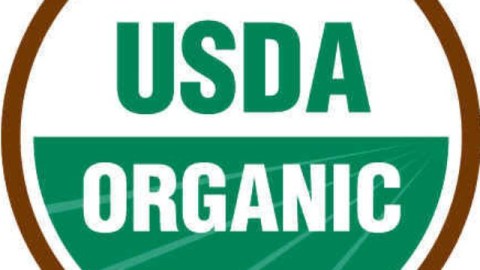Lifting the Veil on Organic Labels

In a guest post today, Samantha Miller digs deeper into understanding the nature of labeling in the organic food market. Miller is a graduate student in Journalism at American University. She is a student in this semester’s “Science, the Environment and the Media” course — MCN.
Grass-fed beef, cage-free chicken, all-natural apple juice … organic Oreos? As large food companies continue to trickle into the mainstream organic market, deciphering food labels has become a bit of a mystery. “Even the basic understanding of what ‘organic’ means is not universal,” according to an article in the Journal of Consumer Behavior. “If consumers cannot distinguish organic from conventional food on reasonable criteria, it is not surprising that they do not purchase organics at greater rates.”
Moreover, several European studies found that consumers are skeptical of organic certification programs, causing them to dismiss organic foods altogether. And maybe they’re onto something — the USDA’s organic program calls itself a “marketing program” that doesn’t regulate nutrition or food safety. Although the program does keep a close eye on products labeled organic.
So to make your next trip to the grocery store a little less confounding, here’s a breakdown of the most commonly used labels.
Eco chic: How sustainability became a Hollywood trend
Singer Sheryl Crow released an organic cookbook last month, actress Natalie Portman launched a vegan shoe line in 2008 and celebrities are photographed toting Whole Foods grocery bags on a daily basis. “Some people now perceive organic food to be fashionable because of the considerable coverage in the media it has received, the recent promotional campaigns and the high prices associated with organic food,” according to the article in the Journal of Consumer Behavior.
While celebrities aren’t getting paid to shop at Whole Foods — that we know of — there’s a reason Americans fawn over the latest Hollywood trends. “Celebrities are particularly effective endorsers because they are viewed as highly trustworthy, believable, persuasive, and likeable,” according to an article from the European Journal of Marketing.
Plus, popular books like Michael Pollan’s The Omnivore’s Dilemma and films like Food, Inc. helped shed light on America’s industrialized food system, ultimately transforming the way people think about food.
And then there’s the clothing market. Fashion designers are beginning to respond to consumer demands for eco-friendly products, and that means a greater selection of feel-good frocks for shoppers. Andwith reputable names like H&M, Levi’s and even Walmart jumping on the sustainable bandwagon, consumers now have myriad options to chose from. In fact, global sales of organic apparel and home fabrics jumped to $4.3 billion in 2009, a 35 percent increase from the year before, according to the Organic Trade Association.
The organic movement has pervaded just about every mainstream outlet — from grocery store aisles and movie theater screens, to New York City runways and the Hollywood Hills. If current trends are any indication, the organic phenomenon is here to stay.
— Guest post by Samantha Miller, a graduate student in Journalism at American University, Washington, D.C. This post is part of the course “Science, Environment, and the Media” taught by Professor Matthew Nisbet in the School of Communication at American. See also other posts on food policy by Winn and members of her project team.





